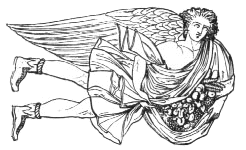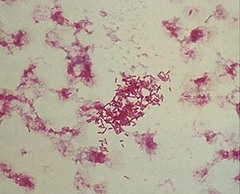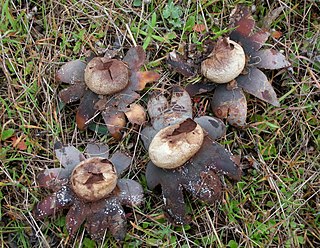
In Greek mythology, Astraeus or Astraios was an astrological deity. Some also associate him with the winds, as he is the father of the four Anemoi, by his wife, Eos.
Iceland Express was a low-fare airline headquartered in Reykjavík, Iceland that was acquired by WOW air. It operated services to several destinations in Europe using wet-leased aircraft. Its main base was Keflavík International Airport.

Astraeus Limited, trading as Astraeus Airlines, was a British airline based at Astraeus House in Crawley, West Sussex, England. Founded in 2002, and named after the Greek God of the dusk, it entered administration on 21 November 2011, ceasing operations the same day.

The Sphinginae are a subfamily of the hawkmoths (Sphingidae), moths of the order Lepidoptera. The subfamily was first described by Pierre André Latreille in 1802. Notable taxa include the pink-spotted hawkmoth, being a very common and recognizable species, the death's-head hawkmoths of Silence of the Lambs fame, and Xanthopan morganii with its enormous proboscis.
Calonectria morganii is a species of fungus in the family Nectriaceae.

Xanthopan is a monotypic genus of sphinx moth, with Xanthopan morganii, commonly called Morgan's sphinx moth, as its sole species. It is a very large sphinx moth from Southern Africa and Madagascar. Little is known about its biology, though the adults have been found to visit orchids and are one of the main pollinators of several of the Madagascar endemic baobab (Adansonia) species, including the critically endangered Adansonia perrieri or Perrier's baobab.

Morganella morganii is a species of Gram-negative bacteria. It has a commensal relationship within the intestinal tracts of humans, mammals, and reptiles as normal flora. Although M. morganii has a wide distribution, it is considered an uncommon cause of community-acquired infection and it is most often encountered in postoperative and other nosocomial infections such as urinary tract infections.

Astraeus hygrometricus, commonly known as the hygroscopic earthstar, the barometer earthstar, or the false earthstar, is a species of fungus in the family Diplocystaceae. Young specimens resemble a puffball when unopened. In maturity, the mushroom displays the characteristic earthstar shape that is a result of the outer layer of fruit body tissue splitting open in a star-like manner. The false earthstar is an ectomycorrhizal species that grows in association with various trees, especially in sandy soils. A. hygrometricus was previously thought to have a cosmopolitan distribution, though it is now thought to be restricted to Southern Europe, and Astraeus are common in temperate and tropical regions. Its common names refer to the fact that it is hygroscopic (water-absorbing), and can open up its rays to expose the spore sac in response to increased humidity, and close them up again in drier conditions. The rays have an irregularly cracked surface, while the spore case is pale brown and smooth with an irregular slit or tear at the top. The gleba is white initially, but turns brown and powdery when the spores mature. The spores are reddish-brown, roughly spherical with minute warts, measuring 7.5–11 micrometers in diameter.

Astraeus is a genus of fungi in the family Diplocystaceae. The genus, which has a cosmopolitan distribution, contains nine species of earthstar mushrooms. They are distinguished by the outer layer of flesh (exoperidium) that at maturity splits open in a star-shape manner to reveal a round spore sac. Additionally, they have a strongly hygroscopic character—the rays will open when moist, but when hot and dry will close to protect the spore sac. Species of Astraeus grow on the ground in ectomycorrhizal associations with trees and shrubs.
Astraeus is a genus of "jewel beetles" in the subfamily Polycestinae, containing the following species:
Astraeus odoratus is a species of false earthstar in the family Diplocystaceae. Described as a new species in 2004, it was originally found in the Thai highlands growing in sandy or laterite-rich soil in dry lowland dipterocarp forests. The species is found in Southeast Asia.

Astraeus pteridis is a species of false earthstar in the family Diplocystaceae. It was described by American mycologist Cornelius Lott Shear in 1902 under the name Scleroderma pteridis. Sanford Myron Zeller transferred it to Astraeus in a 1948 publication. It is found in North America. A. pteridis was previously frequently confused with the supposedly cosmopolitan A. hygrometricus, now shown to be found only in Europe.
Andrew Price Morgan was an American botanist. He investigated the flora of the Miami Valley in Ohio. While his interest included flowering plants, as noted by his Flora of the Miami Valley, Ohio, his special interest was in fungi. Morgan worked as a teacher in Dayton. He studied the botany of the Great Miami River, publishing in 1878 the Flora of the Miami River, Ohio; Morgan also showed particular interest in mycology and bryology. A.P. Morgan was a mentor to the prominent American mycologist Curtis Gates Lloyd. His correspondence with Lloyd is stored in the Lloyd Library and Museum in Cincinnati. Lloyds portion of the correspondence is stored in the Ada Hayden Herbarium at Iowa state university. Morgans collection of preserved fungi can also be found at the Ada Hayden Herbarium along with Laura Morgans gouache illustrations of fungi that could not be preserved.
Pyroeis in ancient Greek religion is the god of the wandering star Areios, the planet Mars.
Astraeus smithii is a species of false earthstar in the family Diplocystaceae. It was described as new to science in 2013. The specific epithet honors American mycologist Alexander H. Smith. The fungus is found in the central and northern United States, where it grows on the ground at forest edges and open areas.

Astraeus telleriae is a species of false earthstar in the family Diplocystaceae. Described as new to science in 2013, it is found in the Mediterranean region, from southern Spain to Greece. The specific epithet honours Spanish mycologist Maria Teresa Telleria.

Astraeus sirindhorniae is a species of false earthstar in the family Diplocystaceae. A. sirindhorniae can be distinguished from close relatives A. odoratus, A. asiaticus and A. hygrometricus by differences in fruit body size, spore size, spore ornamentation, and peridium structure. The fungus was discovered in Phu Khieo Wildlife Sanctuary in northeastern Thailand, as part of a project to document the biodiversity of mycorrhizal fungi. The specific epithet sirindhorniae honors Princess Maha Chakri Sirindhorn on the occasion the 84th birthday of her father, King Bhumibol Adulyadej. Known only from north and northeastern Thailand, A. sirindhorniae is suspected to be ectomycorrhizal with members of the Dipterocarpaceae, although this has not yet been proven.
Astraeus is a titan in Greek mythology










